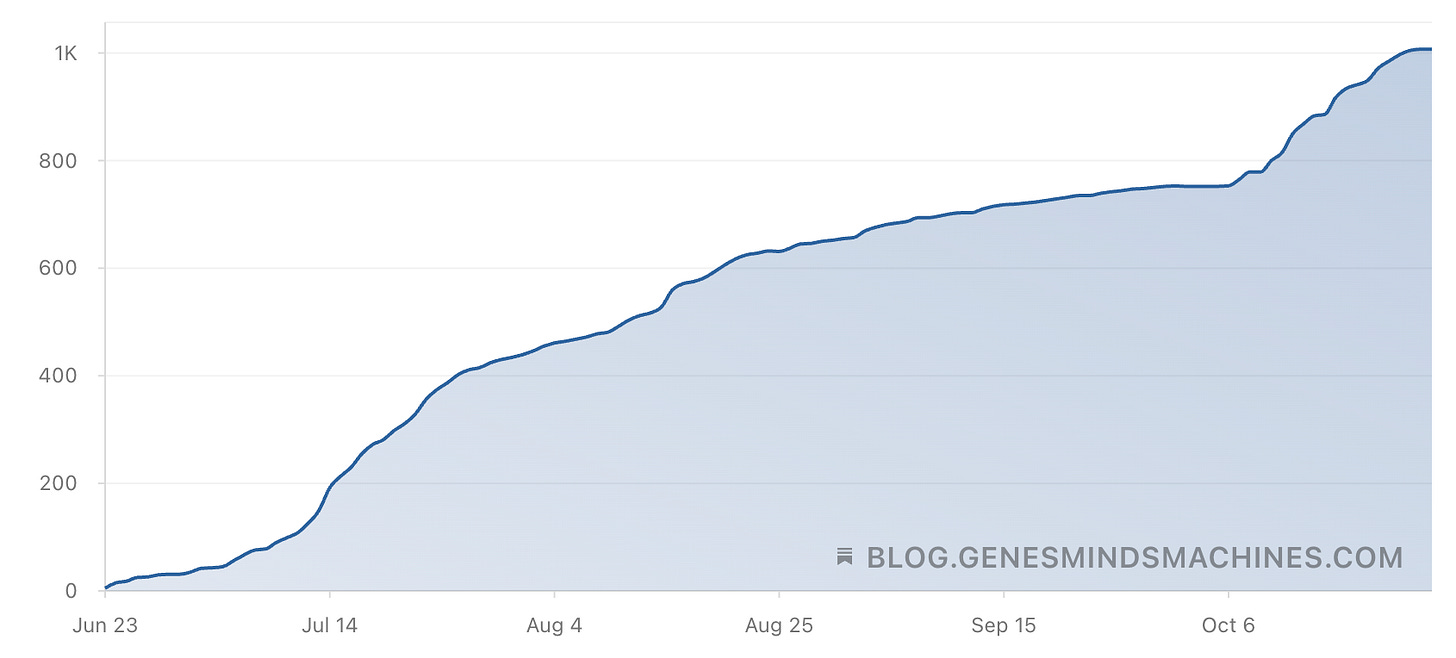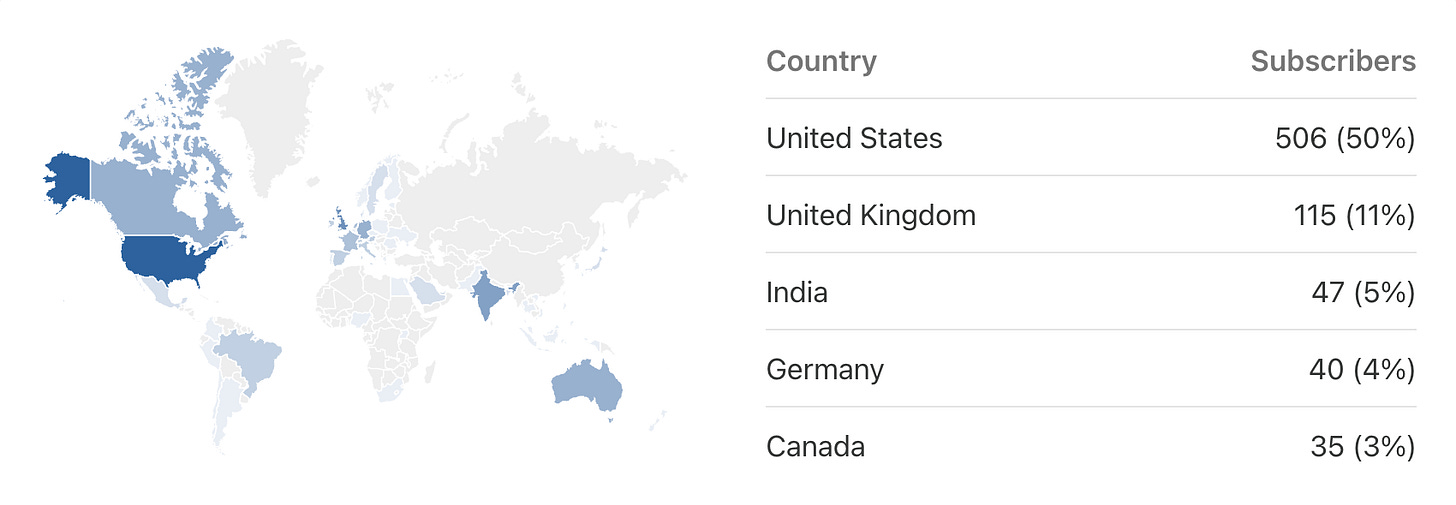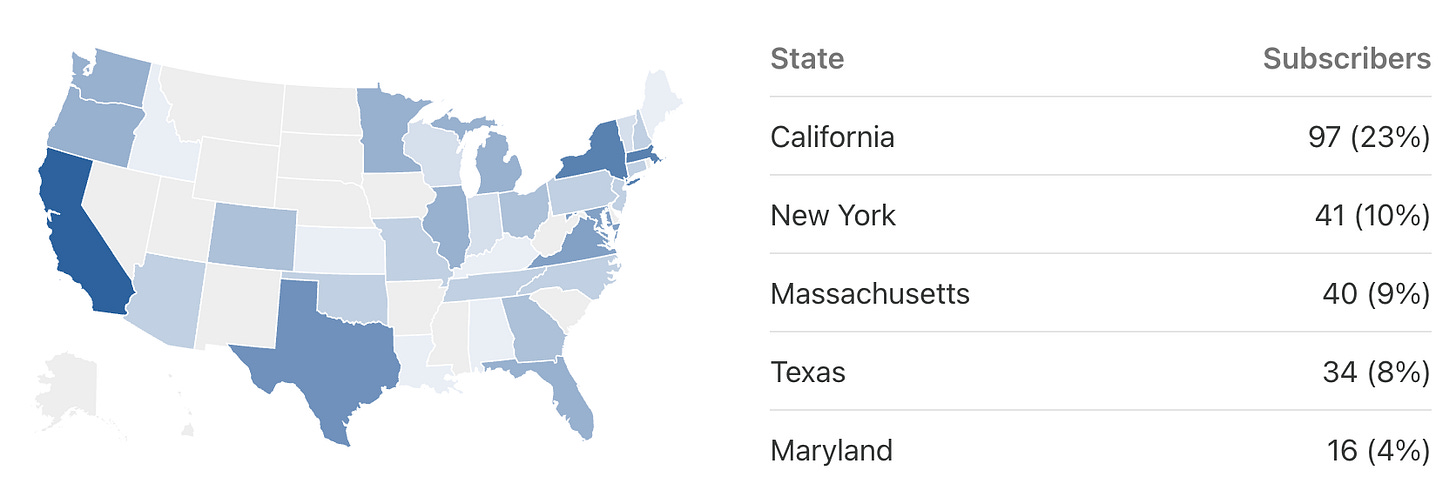A few days ago I broke 1000 subscribers here on Substack. I’d like to thank everybody who has subscribed and who supports my writing. It took me four months to get to a thousand subscribers. (I posted my first article here on June 23, 2025.) At this rate, it will take only 333 years to reach a million. 😉
Half of my subscribers are from the US, and the other half from the rest of the world, with the UK, India, Germany, and Canada being the leading countries outside the US.1
Inside the US, it may be expected that California, New York, and Texas provide the largest subscriber base. They are three of the four most populous states. The remaining state in the top four is Florida. For some reason, people in Florida are not that interested in my posts.2
I was surprised to see Massachusetts and Maryland rank highly in subscriber numbers. They are only the 16th and 18th most populous states, respectively. I suspect subscriber numbers in these states are driven by the large number of people working in higher ed and/or biological research.
Here are the three most popular posts since creation of this blog:
If you subscribed for one of these posts, I’d like to express that I’m not very good at writing the same types of articles over and over. Going forward, I will likely write about different topics, unless I have a new point I want to make about a topic I’ve already covered. In general, I’m writing about whatever captures my attention at the moment.
Now I’d like to invite you to provide feedback in the comments. What do you like so far? What could I improve? You’re also welcome to ask me anything. I’ll do my best to answer all questions in the comments.
Let’s pause for a moment and reflect on how terrible the projection is that Substack uses for their map of the world. It looks like a Mercator projection to me, which makes Greenland appear to be as large as Africa, and a few times larger than Western Europe. Is it really so difficult to use an appropriate projection, such as Winkel tripel?
As of today, I have ten subscribers in Florida. There are at least eleven states with more than ten subscribers, in alphabetical order: California, Illinois, Maryland, Massachusetts, Michigan, Minnesota, New York, Oregon, Texas, Virginia, Washington.




Teaching pedagogy ; what does it look like to train students as our tools move to higher level of abstraction?
If you were to pretend 80% of performance in science comes from %20 of the work, what has this been in your life? What mental models or concepts have yielded unexpected utility across unrelated problems?
Suppose the generative AI boom is a bubble that pops tomorrow. We have more capital expansion in computing power than ever before, and one would assume those resources would become dirt-cheap in this scenario. How could biology most benefit from these resources? What big problems are within reach when compute is not a limiting factor?